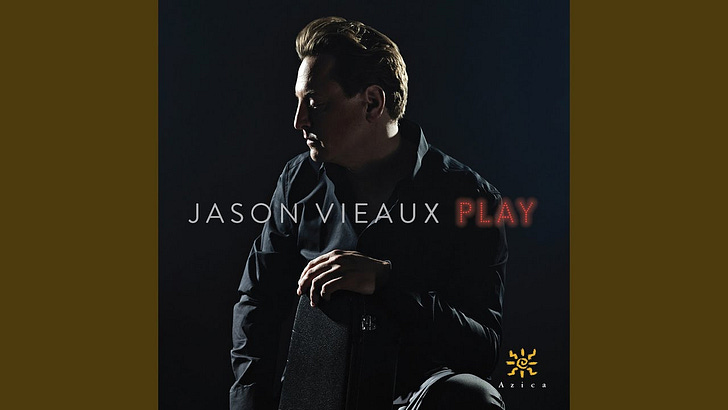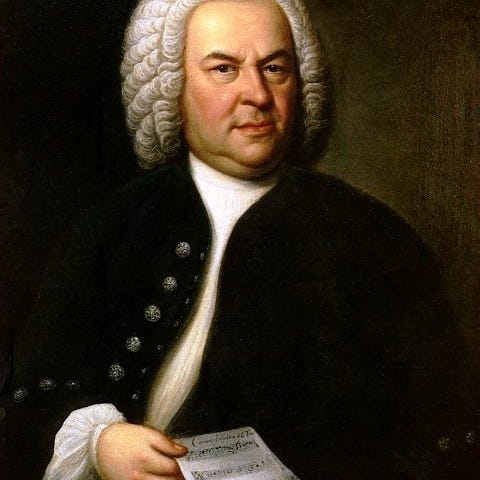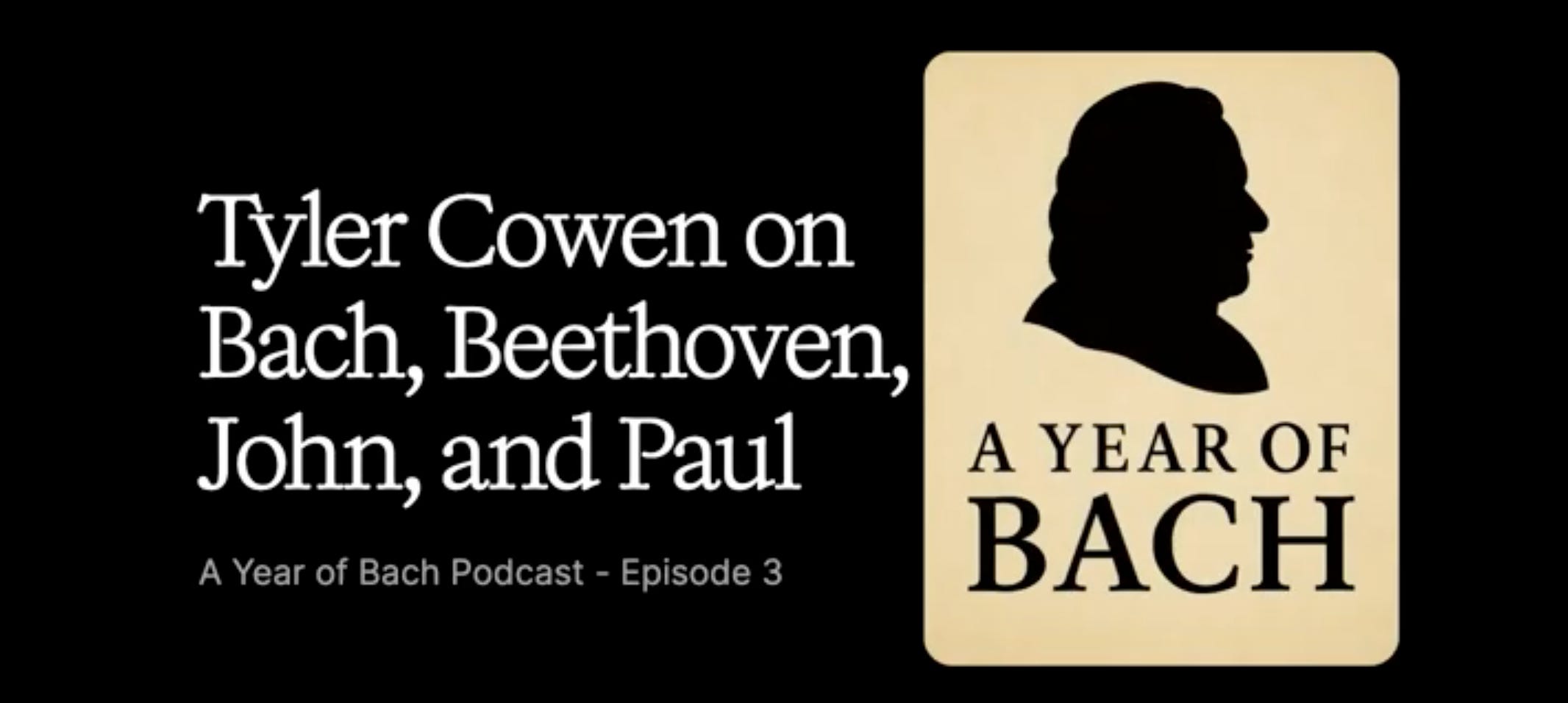‘Everything is melody’: Classical Guitarist Jason Vieaux on Bach
Description
Episode 2 of A Year of Bach Podcast features my conversation with the great classical guitarist Jason Vieaux. We talked about the pleasures and sorrows of adapting Bach for guitar, how not to play too big in a recording studio, and the pleasures of live performance.
Jason is hosting a guitar retreat for students of all levels in Benicia, California from October 10 - 12, 2025 — learn more about it here.
My podcast editing AI got a little aggressive on jump cuts! I’m working on getting better at this. As with everything, it’s all harder than it seems to do it right…
Links & references
Jason’s Grammy award winning album Play:
His album Images of Metheny, a desert island disc for me:
https://www.youtube.com/playlist?list=OLAK5uy_kt99hh3nx2Rc2xK1GryK-YLzYu0qiltu4
Jason and Clancy Newman, Live in Philadelphia during COVID:
Fernando Sor’s tricky Etude #1
Ponce’s Sonata Mexicana
And we name-checked a bunch of brilliant guitarists:
David Russell
Julian Bream
Andres Segovia
Christopher Parkening
Zoran Dukic
Lorenzo Micheli
Aniello Desiderio
Kazuhito Yamashita
Marcin Dylla
Colin David
Support & subscribe
* Get the full transcript and future episodes straight to your inbox.
* Subscribe on Apple Music or Spotify
Chapter markers:
02:43 Techniques and Approaches to Playing Bach
12:48 Teaching and Developing Musical Skills
19:25 The Influence of Julian Bream
23:27 The Essence of Musical Intention
25:08 The Challenge of Recording for Commercial Labels
26:33 Recording Techniques and Spaces
32:18 The Pandemic and Performance
34:50 Pop and Jazz Influences
38:46 Upcoming Projects
Intro music: Adagio of BWV 974, performed by your host on his home piano.
Transcript:
[00:00:00 ]
Evan Goldfine: Hello everyone and welcome to the second episode of the year of Bach Podcast where I talk with people whose lives have been touched by the great master.
Today I'm very grateful to host one of my musical heroes, Jason Vieaux. That's V-I-E-A-U-X, for everyone who should start typing his name into Spotify or Apple Music right now. Jason's widely recognized as one of the world's finest classical guitarists. I've spent hundreds of hours with his recordings. I recommend them all, but my special favorites are his Grammy award-winning album Play, and of course, Images of Metheny where, Jason adapted the tunes of Pat Metheny for classical guitar.
I've also, of course, enjoyed his two albums of Bach, and today we'll be talking about the special thrills and challenges of adapting Bach for guitar. So Jason, thank you so much for joining us here.
Jason Vieaux: it's my pleasure. Thank you, Evan,
for having me.
Evan Goldfine: Yeah. So [00:01:00 ] Bach never wrote specifically for the classical guitar, but his works are touchstones for all of us who have picked up a classical guitar.
I was hoping you could speak to the particular pleasures and sorrows about Bach has adapted for the guitar as we play it today.
Jason Vieaux: There Are definitely challenges of transferring the music to the guitar, not only just in playing the notes themselves, the pitches themselves, but making decisions I try to make it sound as if Bach did have a guitarist next to him, a modern guitarist with this more modern instrument, and how he might have made things sound better. In other words, change either octave displacement or, or even fill in, or in the case of cello works make something that sounded more germane to the classical guitar.
And I think that's a good approach because then you don't get too stuffy or analytical about, well, this isn't what he would do. I jokingly say to my students at Cleveland Institute of Music or Curtis, it's like, well, we can't ask [00:02:00 ] him 'cause he's dead, so if we could ask him, that'd be great, but we gotta just, you know, have a little faith and press on,
Evan Goldfine: Where do you get stuck when you're trying to do the adaptations and what are those decisions that you have to make?
Jason Vieaux: It's more like, it's more like baseline kind of things usually.
Right, or where you have to decide on an octave displacement, a lot of times you get stuck and then you've gotta work backwards, you gotta go to your destination point where that phrase or that section would finish and then kind of work back.
It's like checking your work and, and, I don't know, trigonometry or something like that, you know, math kind of thing. But that's all right. I mean, that's a fun process because it's satisfying when you come to something that you've figured out that sounds good and you feel like it sounds good and that it's something that you can, perform.
It's always hard, it's always difficult to play. The most difficult thing about playing Bach well on the guitar, in my view is making the polyphony sound effortless. Because that's a [00:03:00 ] big, that's a big thing for me. Like I've refingered Prelude and Fugue and Allegro 998, since I've. When I first learned it at age 20 in 95 I would've been 21.
Just short of when I did my first recital of it, my graduation recital, I was 21. From there on, I probably changed fingerings on that piece. Over 30 years, about four or five times, four or five go rounds. 'cause I, I tend to rotate them in and out of the solo program. I'll play 'em for three years, then I put 'em away for five or seven or something.
Then I bring 'em back mainly because I'm learning other ones and then I want those, or if it's for a record. It's those, periods when you're away that are nice because you're learning new. Things from the stuff that you're adapting from violin or cello or whatever it might be.
I've not really attempted a keyboard one to date. But then you come back to say Prelude and Fugue Allegro or. The third Lute suite [00:04:00 ] and you have fresher ears, more experience, and that part is very satisfying.
Evan Goldfine: Have you found some of those interpretations to have changed when you came back?
Yeah. Three or five years later. What happens?
Jason Vieaux: Sometimes the tempos get faster, sometimes they get slower. Sometimes they, to some, if they get a little slower, it's again to accommodate more up stem, down stem kind of things. Like things in the, in, you know, that are in the top line that are you start to hear more as, two line type of, things.
And then I want to refinger some of that stuff across two strings to bring that out. You know, just things like that I would've missed when I was in my early twenties,
Evan Goldfine: that's interesting 'cause I find you're playing to be especially orchestral, you know, Segovia describes the guitar as an orchestral instrument.
I think part of that is being able to foreground and background the melodies with the accompaniment. 'cause you're trying to do a number of things with Bach especially are, do you have tricks to keep the contrapuntal lines [00:05:00 ] clear given the mechanical limitations of the instrument?
Jason Vieaux: Well, one of the things I do more often, this is really an oversimplification of it, is I don't do the thing that I think my best colleagues at the time, say 30 years ago, or where you push, you push your fugue subject line way out in front. Mm-hmm. Like an almost like an 80 20 ratio to the other voices. I like doing now more of a 60 40 if you have the touch to do it because. It's like everything, everything is melody.
So even though maybe a tenor line is not as interesting as, not as the now alto line that is now getting a spotlight for two measures, I don't, I'm not a big fan of subjugating the other lines for the purpose of really pushing this one line out way out in front. So I might give a spotlight to something that I think is particularly melodic, but generally I, I think.
When you, when you do listen to, you know, good performances [00:06:00 ] of, of Bach or like the orchestral the actual orchestral pieces, Brandenburg concertos and this kind of thing, there's more of like an even mix generally, uh, to the various instruments, the ensemble and that. And so I've always had a, I've always had a kind of a orchestrally minded or group, group of musicians minded type of approach to it. So I guess that's one of the things I think that, that have maybe changed a little bit, or deepened.
Evan Goldfine: I know you, you've been thinking about guitar for pretty much your entire life, but for most of us who are amateurs or less, the idea of moving from 80 20 with, certain melody lines to 60 40 seems like a superhuman achievement because for people who don't play guitar, that could mean, different fingers at different sort of plucking ratios. Yes. And also some left-handed techniques also about how you're gonna be articulating in the left hand.
Jason Vieaux: That's right. Could you talk
Evan Goldfine: a little bit about get, get real nerdy about this?
Yeah. Do you even









